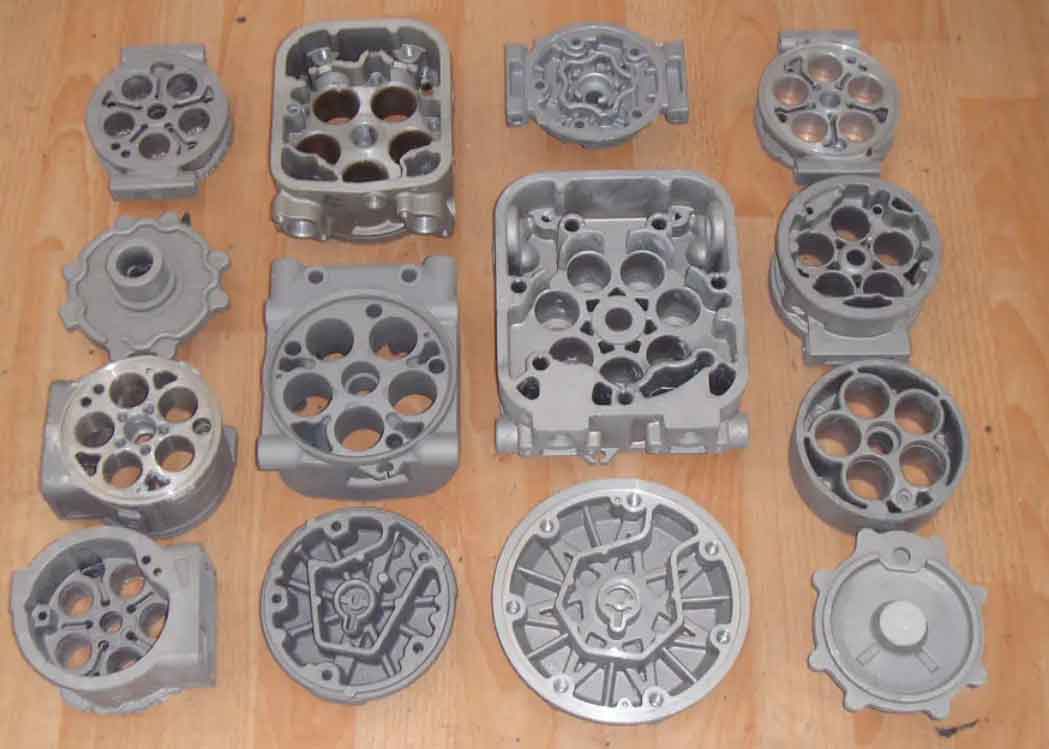7075 aluminum alloy is a kind of high strength aluminum alloy which can be strengthened by heat treatment. High strength and good comprehensive mechanical properties can be obtained by deformation and heat treatment. It is still one of the most widely used light alloy materials in the current aerospace industry. It is suitable for manufacturing load-bearing structural parts, such as aircraft girder, strip, wing pillar, landing gear, etc. the manufacturing method is generally plastic forming process such as forging and extrusion. Its main disadvantages are poor fatigue resistance, stress corrosion and hot cracking tendency. Plastic forming can ensure the high strength of parts, but it can’t produce complex parts with high production cost. When traditional metal mold casting, gravity casting or pressure casting are used to form high strength aluminum alloy, the mold filling is difficult and the hot cracking tendency is serious. Semi solid forming opens up a new way for near net forming of high strength aluminum alloy. Semi solid forming technology is recognized as one of the most promising near net forming technologies of light alloy in the 21st century, and has been listed in the national industrial development catalogue, including thixoforming and rheo forming. Thixoforming has been successfully applied in industrial production, but after many years of production practice and research, it is found that the cost of preparation and remelting is high; the liquid phase composition is low due to billet transfer, and the forming of complex parts is difficult; the requirements of production process control are high. In recent years, more and more attention has been paid to the research of semi-solid alloy slurry direct forming process (rheoforming). Its short process, less material loss, energy saving and low consumption have become the main direction of reducing production costs.
Squeeze casting, also known as liquid die forging, is a process to obtain castings or as cast blanks by applying high mechanical pressure to the liquid metal or semi liquid metal or alloy melt poured into the mold cavity to form and solidify under high mechanical pressure. Squeeze casting process is very similar to die forging and hot extrusion process, which makes liquid metal melt filling and solidification under pressure, only a small amount of plastic deformation occurs in the solidification process, and the microstructure of squeeze casting parts is still as cast. Die forging and hot extrusion process is to make solid metal produce large plastic deformation and process into parts or blanks. The deformation structure of parts or blanks is produced, and the deformation work required is much higher than that of squeeze casting. The typical squeeze casting process is as follows: firstly, the liquid alloy melt is directly poured into the open die, and then the die is closed. At the same time, the alloy melt produces filling flow to reach the external shape and size of the part. Then, the higher pressure is applied to make the solidified metal layer produce certain plastic deformation, and the non solidified metal solidifies under the isostatic pressure, which is the best Finally, the solidification process is completed to obtain the parts. The feature of squeeze casting is that plastic deformation and solidification exist at the same time under high static pressure, the parts have no shrinkage porosity, shrinkage cavity and other defects, the structure is uniform and dense, and will not be involved in gas. The mechanical properties of squeeze casting parts are higher than those of ordinary casting parts, close to or reach the level of die forgings.
According to processing methods, squeeze casting can be divided into direct squeeze casting and indirect squeeze casting. Luo Shoujing and others also put forward the classification methods according to pressure solidification methods, including local pressure solidification method, low pressure filling high pressure solidification method, inclined pouring pressure solidification method and vertical pressure solidification method. Mobile pouring squeeze casting equipment can supplement the classification method by adding a “translational pouring pressure solidification method”. Squeeze casting is one of the typical casting processes to eliminate porosity defects. The results show that the mechanical properties and fatigue properties of 7075 alloy by squeeze casting are significantly improved than those by gravity casting. As it solidifies under pressure, non porous casting is the main feature of squeeze casting technology. A new processing technology, semi-solid squeeze casting, is developed by combining semi-solid pulping technology with squeeze casting forming technology. According to the source of semi-solid slurry, this new material forming process can be divided into thixotropic squeeze casting (also known as thixotropic liquid die forging) and rheologic squeeze casting (also known as rheologic liquid die forging). Semi solid squeeze casting improves the mechanical properties and compactness of the formed parts. Rheo squeeze casting is one of the key research directions of rheo squeeze casting technology, which uses various semi-solid pulping processes to directly pour high-quality semi-solid slurry into the mold cavity for squeeze casting. It combines the advantages of squeeze casting and semi-solid technology, and can produce stress-bearing components with good compactness and high mechanical properties.
Therefore, it is necessary to carry out the experimental research and theoretical analysis related to rheo squeeze casting. Combining lspsf semi-solid pulping process with semi-solid vertical squeeze casting equipment, rheo indirect squeeze casting process is studied. Taking the rheo indirect squeeze casting 7075 high strength aluminum alloy wheel parts as an example, the microstructure and mechanical properties of rheo indirect squeeze casting parts under different process parameters were studied The solidification law of 7075 aluminum alloy in rheo forming by “translational pouring pressure solidification method” has accumulated certain theoretical basis and empirical data for the application of rheo squeeze casting technology in high strength aluminum alloy structural parts.

